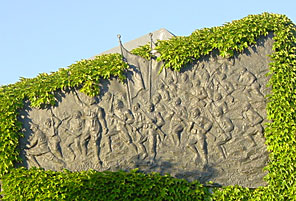



|
Anzacs
Despite the passing of the years, the Gallipoli story is still passed down with the same passion as was done with earlier generations. Australian schoolchildren still listen to stories of brave Simpson and his donkey, the gallant attack at Lone Pine, the selfless charge at the Nek, or some such tale of Australian bravery. Each year the children are asked to observe a minute's silence in memory of men and events they probably do not understand. No-one could pass through the Australian education system without becoming aware of Gallipoli, but few students realise that the Anzacs were invaders. Even after all these years, the Anzac legend, like all legends, is highly selective in what it presents as history. The interesting thing is that, in some ways, the legend has been redefined in recent years to embrace the Turkish soldiers along with the Anzacs. In recent times, Australia's annual Anzac Day remembrance has focussed less on the battles and more on the human values that shone through during the fighting. When viewed in this light, the Anzac and Ottoman soldier can each be seen as sharing much the same fate; fellow sufferers rather than sworn enemies. This sense of a shared experience between the soldiers of the two countries has created a special affinity between the two nations. Over the decades, a sea change has occurred in Australian-Turkish relations. Gallipoli is for most Australians still their primary point of contact with Turkey and Turkish people. But now the 1915 battles are seen as things that bond the two nations. A new respect, even a sentimentality, has emerged with 'Johnny Turk' today being a figure much more loved than hated by Australians. In Australia and Turkey, it has almost become obligatory to mention Gallipoli whenever the other country is the subject matter. From "Gallipoli - The Turkish Story", Allen & Unwin, 2003 |
|||||||||